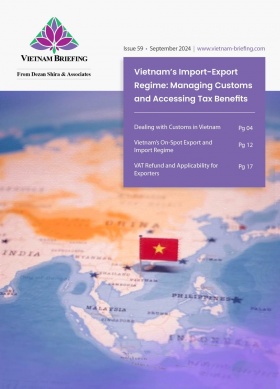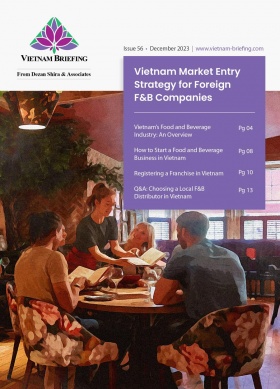Vietnam E-Visas: A Complete Guide
Vietnam’s e-visa program makes it easier and faster for visitors to Vietnam to enter the country. Here’s who is eligible for an e-visa and how to apply.
As a country rich in culture and natural beauty, Vietnam has become a popular tourist destination. Whereas previously, visitors would need to apply for a visa to visit the Southeast Asian nation through a Vietnamese embassy or consulate, in certain cases, visitors can apply for Vietnamese visas online.
Vietnam’s Immigration Law
The Law on Entry, Exit, Transit, and Residence of Foreigners in Vietnam governs entry into Vietnam. It is commonly referred to as the ‘Immigration Law’. The Law is amended by Law No. 51/2019/QH14 dated November 25, 2019, and Law No. 23/2023/QH15 dated June 24, 2023.
The Immigration Law covers e-visas and outlines the conditions with which they can be used.
What are Vietnam e-visas?
Vietnam e-visas are fast and easy to apply for and make traveling to Vietnam for tourism purposes much easier. Vietnam e-visas are available for citizens from all countries and have a validity of up to 90 days. They are valid for single or multiple entries and exits and applicable to citizens of countries and territories as decided by the government.
Note: E-visas do not permit the holder to work. For information on work visas, see: Applying for a Vietnam Work Permit: Guidelines for Foreigners and Employers.
How much do e-visas cost?
An e-visa for a single entry into Vietnam costs US$25, while a multiple-entry e-visa costs US$50.
Note: For more information on visa costs in Vietnam, see: Vietnam Visa Costs: What You Need to Know in 2024.
How do you apply for an e-visa?
An e-visa is applied for online. The outcome of your application will also be provided online.
According to Resolution No. 127/NQ-CP dated Aug 15, 2023, the e-visas are available for citizens of every country and territory.
Before you get started
To apply for an e-visa, you will need a scanned copy of your passport and a scanned passport photo. It is important to note that the scanned passport photo being sent must have the applicant looking directly at the camera without smiling.
Applying for an e-visa online
Once the appropriate materials have been gathered, you need to go to Vietnam’s National Portal on Immigration.
- Click on E-visa issuance.
- Upload your passport details and passport photo. It is important to note that both files must be uploaded separately.
- Fill in the required information.
- Pay the application fee and submit the application (this fee is non-refundable, even if the application is denied).
- Once your application has been successfully submitted, you will receive a registration code. Note: You will need this code to check the status of your application and to print your e-visa if it has been approved.
- Wait the standard 3 to 5 business days and return to the website to check the status of your application. The result is due Monday through Friday every week, except for holidays.
- If approval has been granted, print out your e-visa.
Checking your Vietnam e-visa status
You will not receive a notification via email or otherwise regarding whether or not your application has been approved. Instead, you must check the status of your e-visa application online. To do that, follow these instructions.
- Go to: https://evisa.xuatnhapcanh.gov.vn/tra-cuu-ho-so
- Enter your registration code, email, and date of birth, and submit.
- The outcome of your application will be provided.
- If approved, make sure to print a copy to carry with you.
On arrival in Vietnam
An e-visa makes entry into Vietnam much faster and easier. However, Immigration authorities may ask to see additional documentation when you arrive. This could include:
- Electronic record code
- Hotel booking receipt
- Round-trip air tickets
Note: You must enter at the port of entry chosen in your e-visa application. Once your e-visa has been issued, you cannot change the port of entry.
List of Vietnam entry points that accept e-visas
| Airports | |
| Noi Bai International Airport | Cat Bi International Airport |
| Tan Son Nhat International Airport | Can Tho International Airport |
| Cam Ranh International Airport | Phu Quoc International Airport |
| Da Nang International Airport | Phu Bai International Airport |
| Van Don Airport | Phu Cat Airport |
| Tho Xuan Airport | Lien Khuong Airport |
| Dong Hoi Airport | |
| Land-border Checkpoints | |
| Tay Trang Checkpoint – Dien Bien province | Cau Treo Checkpoint – Ha Tinh province |
| Mong Cai Checkpoint – Quang Ninh province | Cha Lo Checkpoint – Quang Binh province |
| Huu Nghi Checkpoint – Lang Son province | La Lay Checkpoint – Quang Tri province |
| Lao Cai Checkpoint – Lao Cai province | Lao Bao Checkpoint – Quang Tri province |
| Na Meo Checkpoint – Thanh Hoa province | Bo Y Checkpoint – Kon Tum province |
| Nam Can Checkpoint – Nghe An province | Moc Bai Landport – Tay Ninh) |
| Xa Mat Landport – Tay Ninh | Vinh Xuong Landport – An Giang |
| Tinh Bien Landport – An Giang | Ha Tien Landport – Kien Giang |
| Seaports | |
| Hon Gai Port– Quang Ninh province | Nha Trang Port – Khanh Hoa City |
| Cam Pha Port – Quang Ninh province | Quy Nhon Port – Binh Dinh province |
| Hai Phong Port – Hai Phong City | Dung Quat Port – Quang Ngai province |
| Nghi Son Port – Thanh Hoa province | Vung Tau Port – Ba Ria – Vung Tau province |
| Vung Ang Port – Ha Tinh province | Ho Chi Minh City Port – Ho Chi Minh City |
| Chan May Port – Thua Thien Hue province | Duong Dong Port – Kien Giang province |
| Da Nang Port – Da Nang City | |
FAQ - Vietnam e-visas
How long does it take to process a Vietnam e-visa?
As per Vietnam’s Immigration Law, the prescribed processing time for an e-visa is three working days after completing your application and paying the application fee.
How do you apply for a Vietnam visa online?
You can apply for a Vietnam visa online through the Vietnam National Portal on Immmigration.
How do you check your Vietnam visa status?
To check your Vietnam visa status if you have applied for an e-visa, go to: https://evisa.xuatnhapcanh.gov.vn/tra-cuu-ho-so. You will be asked for your registration code, email address, and date of birth.
What happens if you arrive in Vietnam without a visa?
Unless you are from one of the countries permitted visa-free entry to Vietnam, you will not be allowed to enter the country without a visa.
Is a visa required for Vietnam?
If you are not a citizen of one of the countries permitted visa-free entry to Vietnam, or you wish to stay longer than the number of visa-free days allowed, you will need a visa to enter Vietnam.
Can you get a Vietnam visa on arrival?
Yes, but you will need to apply before you depart for Vietnam, and if approved, will receive an approval letter to present to immigration when you arrive.
How long can you stay in Vietnam without a visa?
You can stay in Vietnam without a visa if you are from one of these countries:
- Kazakhstan, Kyrgyzstan (30 days);
- ASEAN countries (14 to 30 days);
- Germany, France, Italia, Spain, the UK and Northern Ireland, Russia, Japan, South Korea, Denmark, Sweden, Norway, Finland, Belarus, Poland, the Czech Republic, and Switzerland (45 days); and
- Chile and Panama (90 days).
How long can you stay in Vietnam on a tourist visa?
You can stay in Vietnam on a tourist visa for a maximum of 90 days.
How long is a Vietnamese tourist visa valid for?
The duration of a Vietnamese tourist visa can be up to 90 days.
Note: This article was first published in March 2017 and was last updated October 8, 2024.
About Us
Vietnam Briefing is published by Asia Briefing, a subsidiary of Dezan Shira & Associates. We produce material for foreign investors throughout Asia, including ASEAN, China, and India. For editorial matters, contact us here and for a complimentary subscription to our products, please click here. For assistance with investments into Vietnam, please contact us at vietnam@dezshira.com or visit us at www.dezshira.com.
Dezan Shira & Associates assists foreign investors throughout Asia from offices across the world, including in Hanoi, Ho Chi Minh City, and Da Nang. We also maintain offices or have alliance partners assisting foreign investors in China, Hong Kong SAR, Dubai (UAE), Indonesia, Singapore, Philippines, Malaysia, Thailand, Bangladesh, Italy, Germany, the United States, and Australia.
- Previous Article An Introduction to Vietnam’s Leading Import and Export Industries
- Next Article Vietnamesische Arbeitnehmer im Jahr 2024: Wichtige Erkenntnisse für Unternehmen








